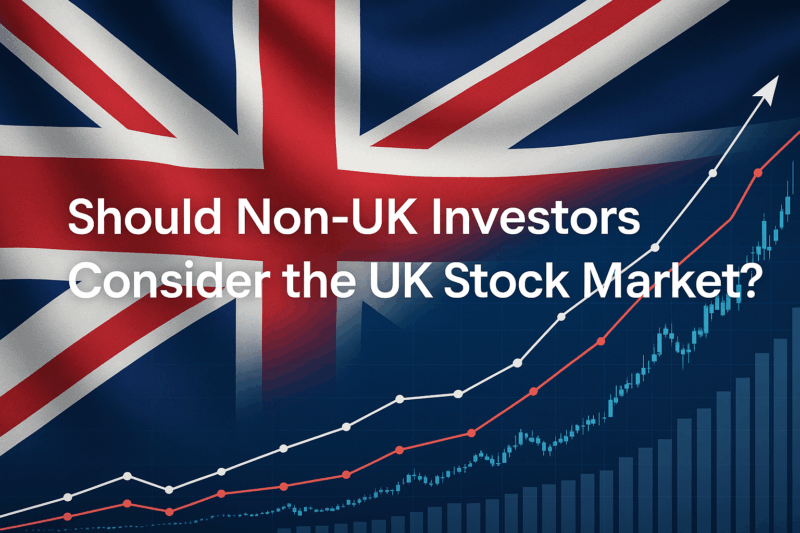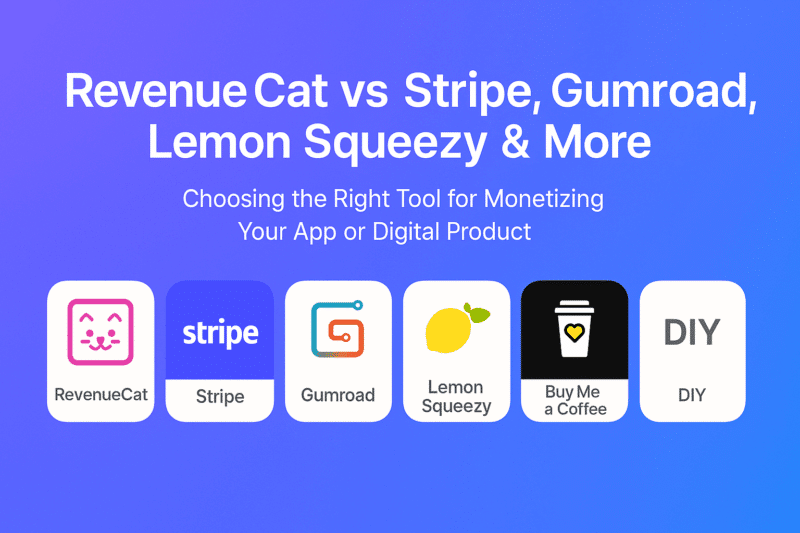 In the global investing landscape, the UK stock market often flies under the radar. It lacks the tech-heavy glamour of the US or the hyper-growth potential of emerging markets. Yet, a recent conversation with a long-time UK-based investor made me pause.
In the global investing landscape, the UK stock market often flies under the radar. It lacks the tech-heavy glamour of the US or the hyper-growth potential of emerging markets. Yet, a recent conversation with a long-time UK-based investor made me pause.
His portfolio, rooted in FTSE 100 stalwarts and selectively chosen high-value companies, has not only weathered market cycles but consistently produced impressive dividend income.>Notably, he didn’t just stick to broad index funds—he identified undervalued opportunities based on balance sheet strength and forward-looking fundamentals.
This prompted a deeper question: Does it make sense for a global investor to allocate part of their portfolio to UK equities? Let’s explore the strategic case for doing so.
1. Attractive Dividend Yields
The UK stock market is renowned for its high dividend yields. The FTSE 100 consistently offers a yield in the 3.5% to 4.5% range, often significantly higher than other developed markets.
Why? UK companies traditionally place a strong emphasis on returning capital to shareholders, and the market composition includes mature, cash-rich sectors like energy, financials, tobacco, and mining. These industries tend to support higher dividends because:
- They are capital-intensive but mature: With limited reinvestment opportunities for rapid expansion, these companies often distribute excess profits to shareholders.
- They generate steady, predictable cash flows: Utilities, oil majors, insurers, and tobacco companies typically operate in sectors with relatively stable demand, which enables consistent dividend payments.
- They are structurally profitable: Many benefit from strong pricing power, long-term contracts, or regulatory protections that support margins even during economic downturns.
Noteworthy examples include:
- British American Tobacco (BATS) – Yield ~5.7–6.0%
- Legal & General (LGEN) – Yield ~8.4–8.6%
- M&G (MNG) – Yield ~7.8–8.0%
- Phoenix Group (PHNX) – Yield ~8.3–8.6%
For investors focused on income, these yields remain very competitive—especially when compared to global peers, where 2–4% is often considered high. UK equities offer a rare combination of dividend consistency and attractive valuation that income-seeking investors should not overlook.
2. Diversification by Sector and Style
UK equities offer diversification benefits that go beyond geography. Many global portfolios today are heavily tilted toward growth-oriented tech, especially those focused on US or pan-European indices. The UK, by contrast, has a value tilt and is concentrated in sectors like:
- Energy and Resources: Shell, BP, Rio Tinto
- Financial Services: HSBC, Lloyds, Prudential
- Consumer Staples: Unilever, Diageo
This concentration and value bias are rooted in the historical and structural makeup of the UK economy. Unlike the US, which has fostered a vibrant ecosystem of high-growth technology firms, the UK’s capital markets have long been dominated by mature industries that emerged during its industrial and colonial past. Many of these sectors—such as oil, banking, and insurance—continue to play a central role in the UK’s economy and capital markets.
Furthermore, London’s role as a global financial hub has attracted listings from multinational companies that generate most of their revenue overseas but are valued on more traditional fundamentals like cash flow, dividends, and asset strength. This reinforces the market’s identity as a haven for income and value investors rather than growth chasers.
This makes UK equities a useful counterbalance to growth-heavy allocations. They also tend to perform better in inflationary environments or when interest rates rise, offering a form of macroeconomic hedging.
3. Valuation Discounts
UK equities trade at a meaningful discount to peers in the US and Europe. The FTSE 100 typically shows a forward P/E ratio in the 11–13x range, compared to 15–20x for the Euro Stoxx 50 and even higher for the S&P 500.
This discount is often attributed to:
- Brexit overhang and political uncertainty
- Sector mix that lacks high-growth tech
- Low domestic GDP growth
However, for long-term investors, valuation gaps of this magnitude can signal opportunity rather than weakness.
3a. Recent Tailwinds and Outperformance
Over the past two years, UK equities have enjoyed a notable run, with several large- and mid-cap names delivering substantial returns—some even doubling in value. This outperformance has been fueled by a combination of macroeconomic and structural tailwinds:
- Commodities and Energy Boom: Rising oil, gas, and commodity prices have significantly boosted profits and valuations for firms like Shell, BP, and Glencore.
- Weak Pound Sterling: A subdued GBP has inflated the value of foreign earnings when translated back to sterling—especially important since over 70% of FTSE 100 revenues come from abroad.
- Rising Interest Rates: The UK’s large financial sector has benefited from improved margins on lending and underwriting.
- Valuation Re-Rating: Many UK stocks began to re-rate as global capital returned in search of value and income.
An additional opportunity lies in potential acquisitions. Many UK-listed companies, particularly mid-cap and small-cap firms, are trading at valuations that make them attractive targets for larger global—often US-based—corporations. With the pound remaining relatively weak, UK assets are more affordable for foreign buyers, creating upside for existing shareholders.
4. Favorable Tax Treatment of Dividends
One of the standout advantages of UK equities is that the UK does not impose a withholding tax on dividends paid to non-residents. This is in stark contrast to many other European countries, where withholding taxes can range from 15% to 30%, often with complex refund procedures. As a result, non-UK investors receive dividend income gross, improving overall yield potential.
This benefit becomes even more powerful when combined with residence or structuring in tax-favorable jurisdictions. Here are a few notable examples:
- Malta: Through its full imputation system and tax refund mechanism, Maltese holding companies can receive dividends tax-free and remit them with partial refunds to shareholders. Foreign-sourced dividends are often not taxed at the personal level if structured via the remittance basis or through participation exemptions.
- Cyprus: Under the non-domicile regime, individuals who qualify as “non-doms” are exempt from taxes on worldwide dividends for 17 years. Many investors use Cyprus personal residency or holding company setups to shield passive income from tax entirely.
- Dubai (UAE): There is no personal income tax in the UAE. Both individuals and companies domiciled in Dubai can receive foreign dividends without any local taxation, making it highly attractive for high-net-worth investors and global entrepreneurs.
- Singapore: Singapore does not tax foreign dividends received by individuals, provided they are not remitted in a way deemed part of a business. For companies, exemptions or territorial-based rules may also apply. The country’s stable rule of law and pro-investor tax policy enhance its appeal.
In all these jurisdictions, the combination of no UK withholding tax and low or zero local tax can result in entirely tax-free dividend income—especially when using company structures, trusts, or appropriate personal residency status.
However, local tax treatment will ultimately depend on an investor’s personal tax residency, structuring, and remittance behavior. It is therefore advisable to consult with an international tax advisor before acting on these advantages.
5. Currency Exposure
For euro-based or other non-GBP investors, currency fluctuations add a layer of risk (or opportunity). A weak pound can drag on returns when repatriated, but a strengthening pound boosts your income and capital gains in local currency terms.
Investors can hedge this exposure in several ways:
- Currency-hedged ETFs: GBP-hedged versions of UK equity ETFs.
- Forward contracts or FX options: Used to lock in exchange rates.
- Natural hedging: Diversifying across multiple currencies in your portfolio.
Hedging adds complexity and potential cost, but it can protect purchasing power and stabilize returns over shorter investment horizons.
6. Access and Liquidity
London-listed shares are easily accessible via most international brokers. Platforms like Interactive Brokers, DEGIRO, or Saxo Bank offer direct access. Many UK companies also trade as ADRs on foreign exchanges, but direct LSE access often provides better liquidity and pricing.
For ETF investors, options include:
- iShares Core FTSE 100 UCITS ETF (ISF)
- Vanguard FTSE UK Equity Income Index Fund
7. Risks to Keep in Mind
- Sector concentration: Heavy weight in energy and finance.
- Political and regulatory risks: The UK continues to face policy instability and leadership turnover.
- Diminished geopolitical influence: The UK is no longer considered a global economic or political leader by many investors.
- Growth limitations: Sluggish domestic economy and limited tech/innovation exposure.
These are not reasons to avoid UK stocks outright, but they suggest the market should be seen as a complementary allocation, not the core of a global equity portfolio.
8. Who Should Consider UK Equities?
- Income-focused retirees or near-retirees
- Value-oriented investors
- Global diversification seekers
- Investors who value legal transparency in an English-speaking jurisdiction
- Residents in tax-favorable jurisdictions
- Contrarian investors betting on UK recovery and acquisitions
UK equities serve as a compelling complement—especially when income, diversification, and defensiveness are top priorities.
Conclusion: A Strategic Income and Diversification Play
For income-oriented investors or those seeking valuation discipline, the UK market is worth serious consideration. High dividend yields, no withholding tax, sectoral diversification, and valuation discounts make it a strong candidate for inclusion in a well-rounded global portfolio.
While the UK may not offer the explosive growth of tech or emerging markets, it provides consistency, cash flow, and a counterweight to dominant market narratives. For European investors in particular, it’s geographically close, structurally accessible, and fiscally efficient.
In an era of market froth and stretched valuations, that quiet dependability may be just what your portfolio needs.

 Options trading often boils down to one critical decision: should you let your position expire or close it early? This choice is relevant for both buyers and sellers of calls and puts. In this article, I’ll break down the scenarios for each type of option—long calls, short calls, long puts, and short puts—and provide practical tips for making the best decision.
Options trading often boils down to one critical decision: should you let your position expire or close it early? This choice is relevant for both buyers and sellers of calls and puts. In this article, I’ll break down the scenarios for each type of option—long calls, short calls, long puts, and short puts—and provide practical tips for making the best decision.
 Interest rates are among the most influential tools in the financial world, wielded by central banks to regulate economic activity and maintain stability. But how do they work, and why do they matter so much? Moreover, how do decisions by the U.S. Federal Reserve (Fed) ripple beyond the United States, impacting currencies like the euro and the lives of people in other economic zones? Let’s break it down.
Interest rates are among the most influential tools in the financial world, wielded by central banks to regulate economic activity and maintain stability. But how do they work, and why do they matter so much? Moreover, how do decisions by the U.S. Federal Reserve (Fed) ripple beyond the United States, impacting currencies like the euro and the lives of people in other economic zones? Let’s break it down.